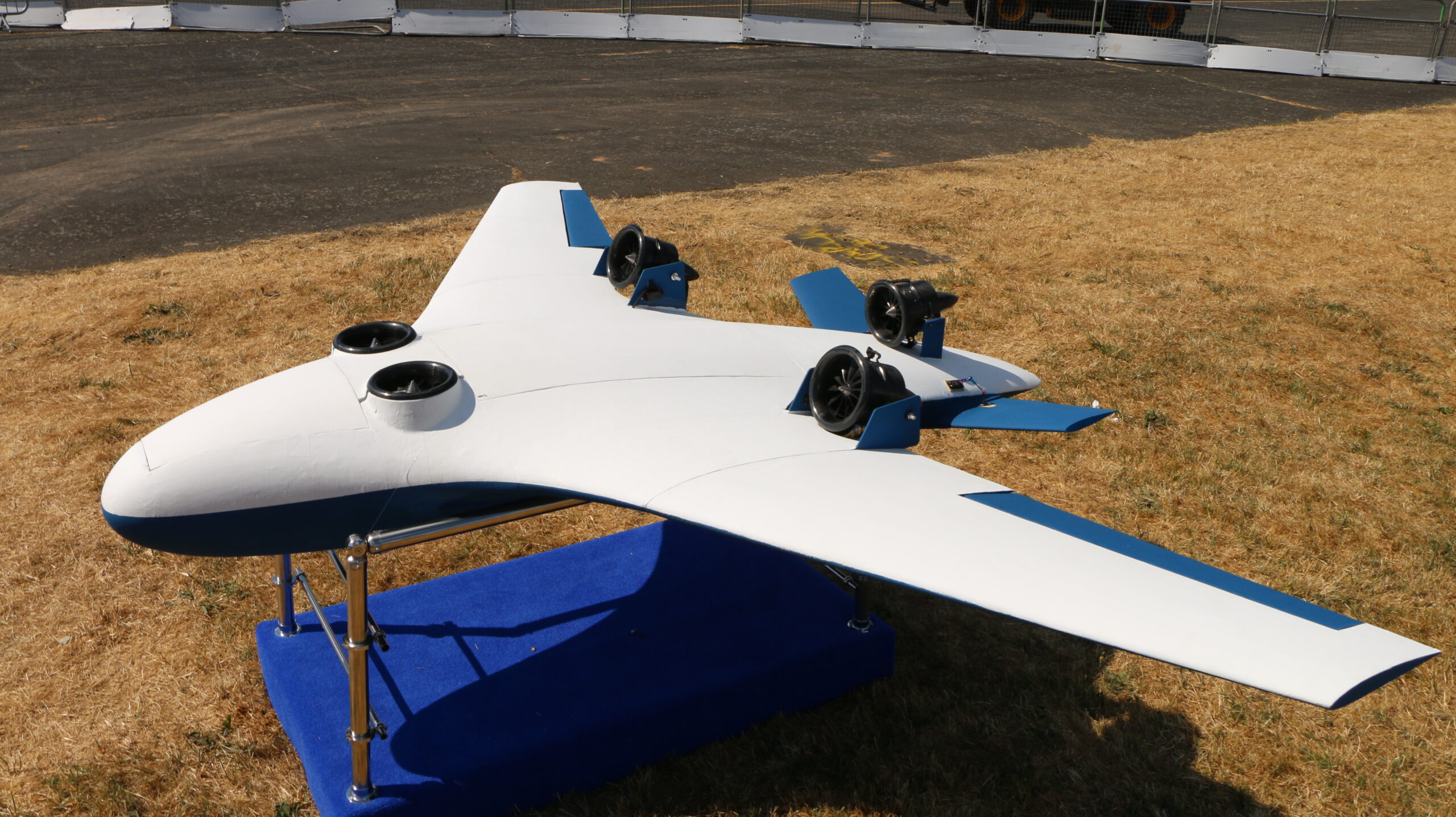Stay Up to Date
Submit your email address to receive the latest industry and Aerospace America news.
U.K. startup reports buyer interest in fully electric passenger flight.
FARNBOROUGH AIRSHOW, U.K. – Test pilots at Cranfield University north of London are practicing in a simulator to fly a subscale demonstrator in 2019 of e-Starling, one of three aircraft models U.K. startup Samad Aerospace is developing with the goal of reducing carbon emissions in passenger and cargo flight by shifting to electric propulsion.
Samad Aerospace CEO Seyed Mohseni said during a press conference on Sunday that his company of 40 people completed a hover test in June with an unmanned 20 percent-scale-version of the craft, which would be piloted and carry a handful of passengers. Next, the company will attempt the transition from vertical to horizontal flight with the 20 percent demonstrator. The pilots in training at Cranfield will fly a 50 percent-scale version equipped with a cockpit for flights that could start by the end of next year.
The company also is developing two other aircraft: A fully electric UAV Starling intended for cargo delivery and other unmanned missions, and a hybrid electric Starling Jet for business travel. Venture-capital-funded Samad Aerospace aims to test fly a full-scale prototype of the UAV Starling by the end of 2018 and test fly a full-scale Starling Jet in 2021.
Mohseni said he has secured letters of intent for potential sales of e-Starlings, including from an unnamed air ambulance provider, and “within three to five years” he wants to have the aircraft certified by regulators and ready for service. A full-scale version of the e-Starling would be built with a range of 640 kilometers while carrying seven people, including one or two pilots, depending on the regulations of different countries. The Starling Jet would have the extra gas propulsion to carry 10 people for 1,610 km.
The e-Starling design includes four electric fans for vertical takeoff, two of which are on pylons at the back of the aircraft and tilt to transition to forward flight. Mohseni wants e-Starling to be completely electric but he recognizes “the battery technology might not get to where we want to be” so the aircraft will be designed to include gas turbines “as a backup” and to extend the range of the aircraft.
Batteries remain a challenge for designing electric-powered aircraft that will be reliable on long flights. Mohseni said the battery for the e-Starling would be located near the landing gear of the aircraft for easy access in case it needs to be changed for safety reasons. Another challenge being considered by the Samad team is balancing weight and functionality.
“If you want to make the battery safer, the battery becomes very heavy,” he said, adding that the battery on the e-Starling weighs “more than a ton.”
At least a dozen companies are building electric vertical takeoff and landing craft, or eVTOLs, that would ferry people for short flights around cities and suburbs. Mohseni said e-Starling and the Starling Jet will stand out by offering longer flights for more people than those air taxis, many of which are being designed as unmanned aircraft that would carry one person. He added that industry development of eVTOLs could benefit Samad Aerospace by leading to the construction of additional helipads that could also serve as landing places for the Starling fleet.
The image above shows a 20 percent subscale version of e-Starling on display at the Farnborough Airshow. (Photo by Tom Risen)
About Tom Risen
As our staff reporter from 2017-2018, Tom covered breaking news and wrote features. He has reported for U.S. News & World Report, Slate and Atlantic Media.
Related Posts
Stay Up to Date
Submit your email address to receive the latest industry and Aerospace America news.




